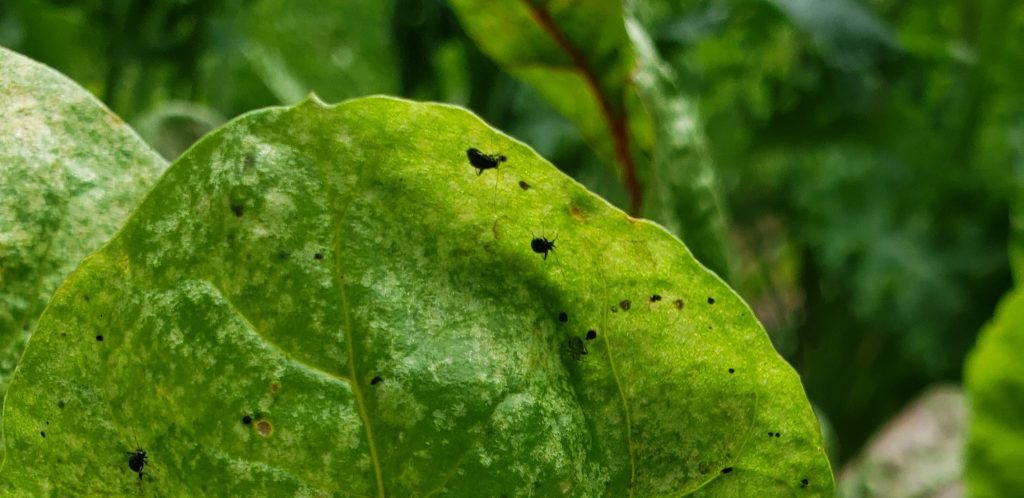
I am not an expert on plants or landscaping. This has just become a hobby and a way to learn how to create an edible landscape. It all started with small raised garden beds my dad built for my oldest child. Together they planted some seeds in late winter and then transplanted them into raised beds mid-spring. We then watched some of them flourish into awesome zucchini plants while watching all the rest of them (other squash and some peppers) die. I was never able to keep a house plant alive, so I was pretty impressed with our zucchini plants. They were beautiful.
They grew into big strong plants and there were so many flowers! I was so excited to have a huge crop of zucchini I was likely going to have to pay people to take it off my hands because how on earth can one eat so much zucchini? But, with all those flowers and all those bees buzzing around, I wasn’t getting any crops. Then I noticed all these little bugs all over the flowers, and I knew they weren’t good bugs. I just knew it.
Educating myself and the kids
What was I doing wrong and how can I fix what is going on with my plants? So, thanks to Google, I found out that zucchini and other squash family plants will have a bunch of male flowers when they first start flowering. Then some female flowers will start blossoming. The female flowers are the ones that fruit if they are properly pollinated. If you are looking for a simple talk on how babies are made, this is a good example without having to get into specifics.

Anyways, I was so impressed by my lack of plant knowledge, I forgot to care about the bugs. We did end up with a huge crop of zucchini that year before those squash beetles destroyed the plants.
Creating a garden space in our front yard
After that, we decided we needed to continue to show our children where our food comes from and how to appreciate all the work that goes into our food. So, as I tore up our horrifically overgrown landscaping in our front yard, I decided that I wanted to replace these decorative plants that required entirely too much maintenance for something I got no benefit from with something that benefited us. I mean if I am going to work this hard (or preferably not that hard) I needed to have some reward on the other end.
 Now, each year I have been adding to the landscaping with plants that produce. I planted blueberry bushes, sage, bee balm, lavender, and strawberries last year. This year I added some elderberry bushes and echinacea. I have also added some annuals and biennials. Like marigolds, kale, Swiss chard, and some peppers, into the landscape to help fill in the garden beds and save the raised beds for other less attractive plants.
Now, each year I have been adding to the landscaping with plants that produce. I planted blueberry bushes, sage, bee balm, lavender, and strawberries last year. This year I added some elderberry bushes and echinacea. I have also added some annuals and biennials. Like marigolds, kale, Swiss chard, and some peppers, into the landscape to help fill in the garden beds and save the raised beds for other less attractive plants.
Learning how to properly care for the plants
We have had some new pests this year, which I am trying to learn how to deal with. But the amazing thing is I am learning this with my kids. As I share what I do know about our plants, and having them help feed and water them, we learned that these little black things are flea beetles, and they are NOT good for the Swiss chard.

Honestly, I try to have my kids involved with the things we do around the house. I think that just starting a little window garden with kiddos is a great way to teach them about plants and where our food comes from. Being able to grow some of your own food is really rewarding. It makes everyone appreciate the massive amount of work others put into the food we purchase at the store.










